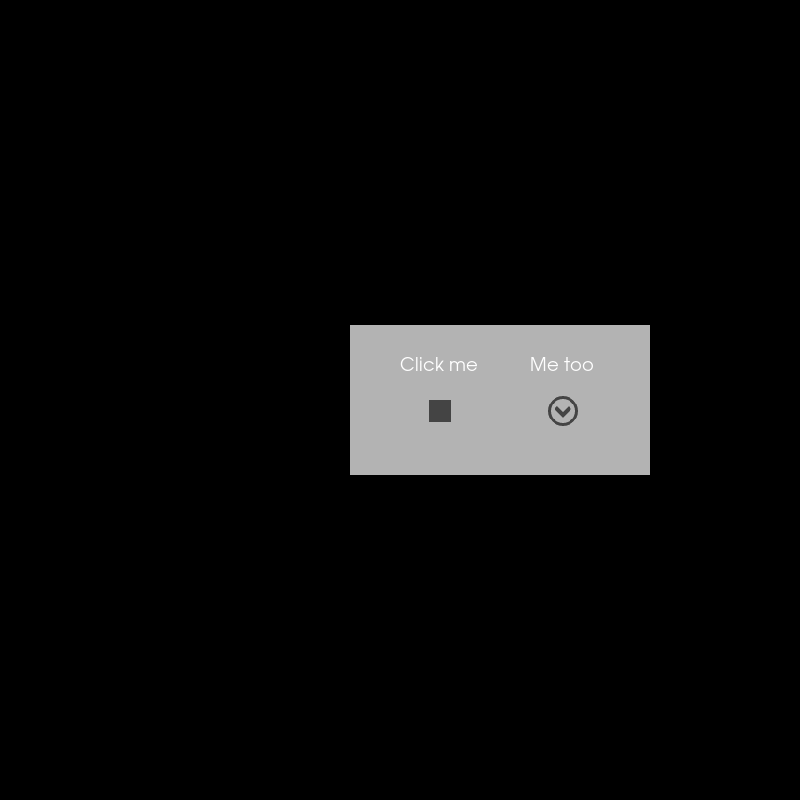Note
Go to the end to download the full example code
Buttons & Text#
This example shows how to use the UI API. We will demonstrate how to create panel having buttons with callbacks.
First, some imports.
import fury
from fury.data import fetch_viz_icons, read_viz_icons
First we need to fetch some icons that are included in FURY.
fetch_viz_icons()
Data size is approximately 12KB
Dataset is already in place. If you want to fetch it again please first remove the folder /Users/skoudoro/.fury/icons
({'icomoon.tar.gz': ('https://digital.lib.washington.edu/researchworks/bitstream/handle/1773/38478/icomoon.tar.gz', 'BC1FEEA6F58BA3601D6A0B029EB8DFC5F352E21F2A16BA41099A96AA3F5A4735')}, '/Users/skoudoro/.fury/icons')
Let’s create some buttons and text and put them in a panel. First we’ll make the panel.
panel = fury.ui.Panel2D(size=(300, 150), color=(1, 1, 1), align="right")
panel.center = (500, 400)
Then we’ll make two text labels and place them on the panel. Note that we specify the position with integer numbers of pixels.
text = fury.ui.TextBlock2D(text="Click me")
text2 = fury.ui.TextBlock2D(text="Me too")
panel.add_element(text, (50, 100))
panel.add_element(text2, (180, 100))
Then we’ll create two buttons and add them to the panel.
Note that here we specify the positions with floats. In this case, these are percentages of the panel size.
button_example = fury.ui.Button2D(
icon_fnames=[("square", read_viz_icons(fname="stop2.png"))]
)
icon_files = []
icon_files.append(("down", read_viz_icons(fname="circle-down.png")))
icon_files.append(("left", read_viz_icons(fname="circle-left.png")))
icon_files.append(("up", read_viz_icons(fname="circle-up.png")))
icon_files.append(("right", read_viz_icons(fname="circle-right.png")))
second_button_example = fury.ui.Button2D(icon_fnames=icon_files)
panel.add_element(button_example, (0.25, 0.33))
panel.add_element(second_button_example, (0.66, 0.33))
We can add a callback to each button to perform some action.
def change_text_callback(i_ren, _obj, _button):
text.message = "Clicked!"
i_ren.force_render()
def change_icon_callback(i_ren, _obj, _button):
_button.next_icon()
i_ren.force_render()
button_example.on_left_mouse_button_clicked = change_text_callback
second_button_example.on_left_mouse_button_pressed = change_icon_callback
Now that all the elements have been initialised, we add them to the show manager.
current_size = (800, 800)
show_manager = fury.window.ShowManager(size=current_size, title="FURY Button Example")
show_manager.scene.add(panel)
interactive = False
if interactive:
show_manager.start()
fury.window.record(
scene=show_manager.scene, size=current_size, out_path="viz_button.png"
)

Total running time of the script: (0 minutes 0.076 seconds)
